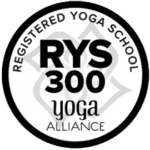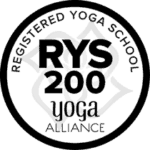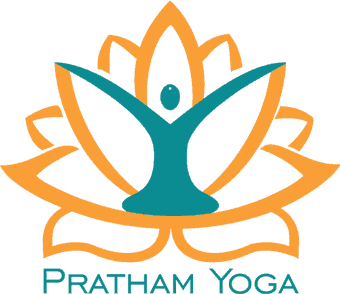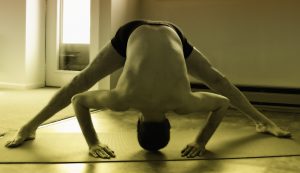The Evolution of Prasarita Padottanasana: Exploring Its Variations and Benefits
Prasarita Padottanasana,” a foundational yoga pose deeply rooted in the ancient practice of yoga, perfectly aligns with the philosophy of Pratham Yoga. Derived from Sanskrit, “Prasarita” translates to “spread,” “extended,” or “stretched,” while “Pada” means “foot,” and “Uttana” translates to “intense stretch.”
This profound asana involves standing with the legs wide apart and folding forward, facilitating a comprehensive stretch throughout the body. At Pratham Yoga, we recognize the significance of this pose in enhancing one’s yoga practice. Prasarita Padottanasana comes with variations labeled as A, B, C, and D, each presenting unique benefits and challenges.
Embrace the essence of Prasarita Padottanasana with Pratham Yoga, where we honor the rich traditions of yoga while embracing its transformative power for the mind, body, and spirit.
History of Prasarita Padottanasana:
The history of yoga traces back thousands of years in ancient India. Asanas like Prasarita Padottanasana were initially documented in ancient yogic texts like the Yoga Sutras of Patanjali, which outline the principles and practices of yoga. These poses were designed to promote physical, mental, and spiritual well-being.
Over time, yoga evolved, and the asanas became more structured and categorized. Prasarita Padottanasana was incorporated into various yoga styles and traditions, with modifications and variations emerging to cater to different body types and levels of flexibility.
Understanding Prasarita Padottanasana A, B, C & D:
Prasarita Padottanasana A:
In this variation, practitioners stand with their feet wide apart, feet parallel to each other, and fold forward from the hips, placing the palms flat on the floor. This variation focuses on stretching the back and hamstrings while strengthening the legs and enhancing balance.
Prasarita Padottanasana B:
Similar to variation A, but in this version, practitioners clasp their hands behind their back, lifting them off the lower back as they fold forward. This variation intensifies the shoulder stretch and encourages a deeper fold.
Prasarita Padottanasana C:
Here, practitioners maintain the wide-legged stance but perform a twist, bringing one hand to the opposite leg or the floor and extending the other hand upwards. This variation engages the core and improves spinal flexibility while opening the chest and shoulders.
Prasarita Padottanasana D:
In this variation, practitioners transition into a headstand from the wide-legged forward fold, with the head resting on the ground and the legs extended upward. This advanced variation demands strength, balance, and control.
Benefits of Prasarita Padottanasana:
1. Stretches and Strengthens:
This asana stretches the spine, hamstrings, calves, and hips while strengthening the legs, core, and back muscles.
2. Improves Posture:
Regular practice of Prasarita Padottanasana helps correct posture issues by elongating the spine and strengthening the back muscles.
3. Enhances Flexibility:
The wide-legged stance and forward fold improve flexibility in the hips, hamstrings, and groin area.
4. Calms the Mind:
The inversion aspect of some variations can have a calming effect on the mind, reducing stress and anxiety.
Yoga Teacher Training and Prasarita Padottanasana:
When contemplating yoga teacher training courses such as the 200-hour Yoga Teacher Training Course (TTC) in Rishikesh, it becomes imperative to grasp fundamental poses, and Prasarita Padottanasana is no exception. Understanding foundational asanas is a key aspect of comprehensive training in a 200 hour yoga TTC in Rishikesh, ensuring a well-rounded and enriching experience.These comprehensive programs often delve deep into the philosophy, history, and practical aspects of yoga, including the correct alignment, variations, and benefits of various asanas.
Rishikesh, India, often hailed as the yoga capital, is renowned for its authentic and traditional yoga teacher training programs. The 200 hour and 300 hour yoga teacher training courses in Rishikesh typically encompass a diverse curriculum covering asanas, anatomy, meditation, philosophy, and teaching methodologies.
Understanding and mastering asanas like Prasarita Padottanasana is fundamental in these training programs as they form the building blocks of a well-rounded yoga practice and teaching methodology.
In conclusion, Prasarita Padottanasana stands as a foundational pose in yoga, offering numerous physical and mental benefits. Its variations cater to practitioners of different levels, and mastering these variations contributes significantly to a comprehensive yoga practice, making it an integral part of yoga teacher training programs worldwide, especially in the yoga-rich landscapes of Rishikesh, India.



